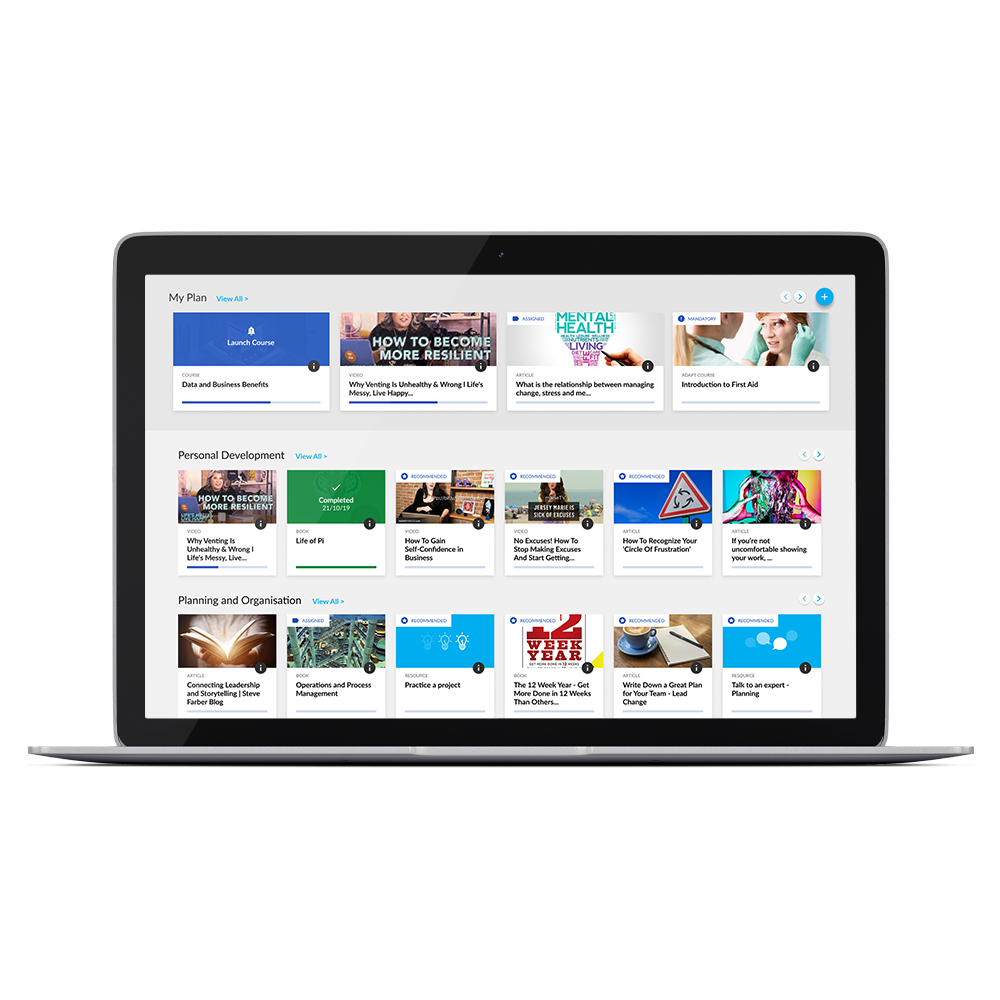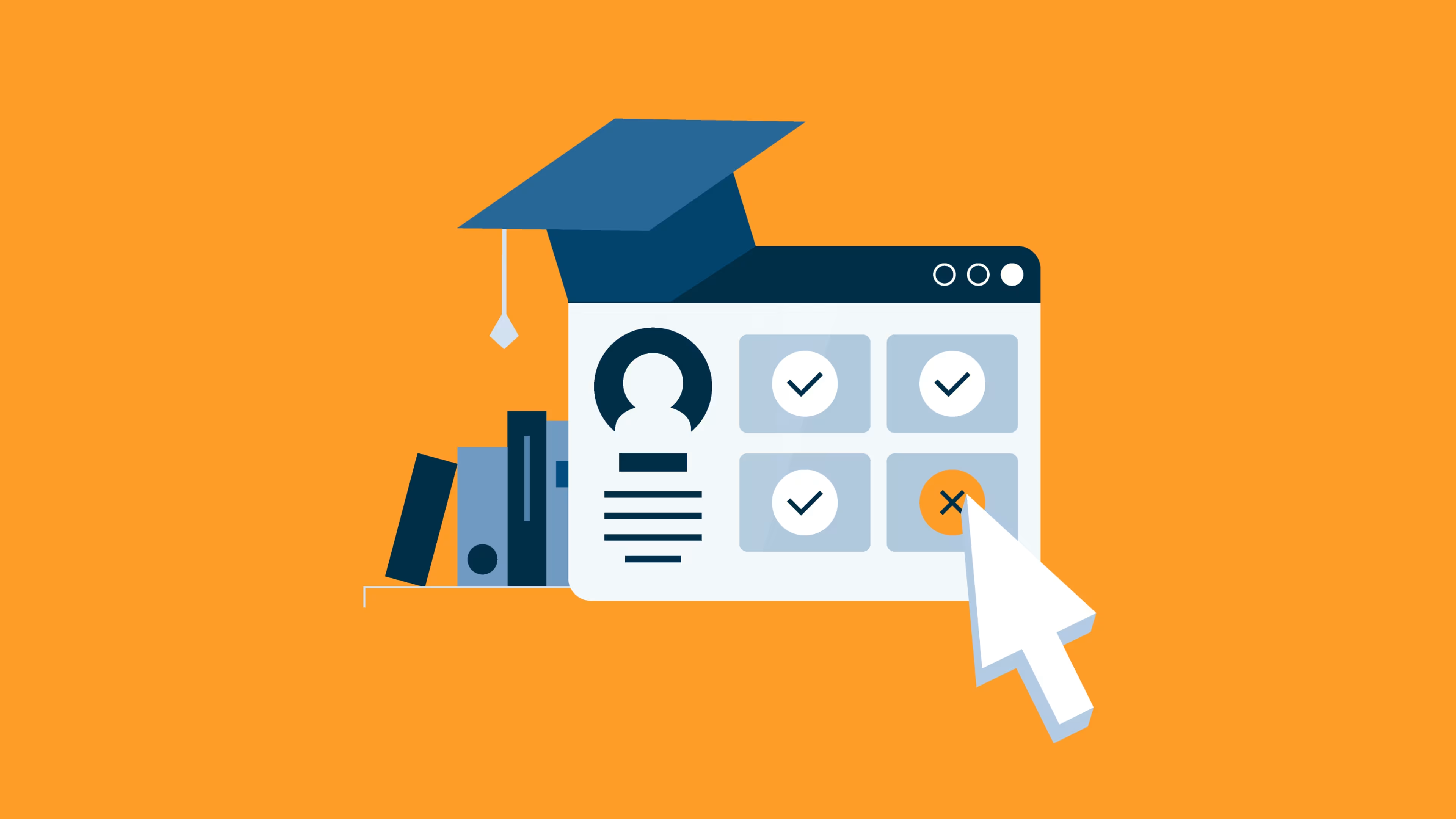Do I need a learning experience platform (LEP)? How does an LEP differ from a learning management system (LMS)? You have questions, and we have answers.
If you’ve had your eye on a new learning management system (LMS) to give your employee training program an overdue boost, you’re in good company. With skills development being one of the five top priorities for a majority of HR leaders in 2022[1], according to Gartner's HR Trends Report, the LMS market is absolutely cooking.
Look closely though and you’ll see that another contender for your e-learning budget has entered the arena: the learning experience platform, or LEP for short. With any new tech, the same question arises: Is this something I need to pay attention to or something I can ignore?
The LEP is a game-changer. The total number of skills required for a single job is increasing at 6.3% annually, and new skills are replacing old ones, according to Gartner's survey mentioned above. Gartner also predicted 29% percent of the skills that were present in an average job posting in 2018 would be obsolete by the end of this year.
That's why you should consider purchasing an LMS as part of a human capital management (HCM) suite and an additional LEP to meet learner experience needs for upskilling or reskilling your workforce[2]. Upskilling costs less than recruiting and hiring, and it improves morale (according to Forbes[3]), so an LMS and LEP combo can save you money in the long run.
However, it's still a significant investment, especially for cash-strapped small and midsize businesses. So, what is an LEP? How is it different from an LMS? Read on to get answers to these important questions and more to help inform your training technology investments.
What is a learning experience platform (LEP)?
A learning experience platform (LEP) is a software system designed to expand the range of training content learners have access to while also providing a more personalized learner experience than one would typically have through an LMS.
An LEP is not a replacement for an LMS. Rather, an LEP is an additional layer that sits atop your LMS and the rest of your training technology stack to enhance the overall learner experience, as illustrated here:

An example of a corporate learning stack[4]
For many organizations, this stack will be either partly or completely invisible. You can purchase a learning suite with an LEP, LMS, and LRS all in one that doesn’t discern between the different layers. You can also purchase an LEP by itself and integrate it with any LMS or LRS systems you already have. Regardless, the goal with an LEP is the same: improve training outcomes through improvements to the learner experience.
What are some learning experience platform features?
As opposed to the typical administration features found in an LMS, the most common features found in an LEP are geared towards the learner, with the goal of improving training content discovery and consumption.
Look for features such as:
A multimedia library. Instead of having to package learning content into a comprehensive course, LEPs can accommodate any type of content on its own, be it podcasts, articles, videos, or otherwise. Typically, this multimedia is displayed alongside courses in a Netflix-like interface for learners to browse through and consume.
AI-driven content recommendations. Employees don’t have to wait for managers or HR to assign them courses in an LEP. AI will automatically recommend the best courses for them based on the content they’ve consumed before, or content that similar learners have consumed or rated highly.
User-generated content. Trainers and HR managers are no longer the gatekeepers of learning. In an LEP, rank-and-file employees get access to intuitive tools that allow them to create their own learning content that they can share with the rest of the company.
Personalized learning paths. Learning content is tagged and grouped by skills, career progression, and a variety of other ways to give workers the best-preset path for their development. Learners also have the option to create their own customized path.
Contextual, on-the-job learning. When integrated with other systems such as your CRM, an LEP can deliver learning content at the time and place it would be most beneficial. Imagine a salesperson seeing a module about how to pitch in an email at the exact time they’re doing that task. That’s what is possible with an LEP.

An example of a multimedia learning library in Headstream (Source)
Some familiar features from the LMS world, such as gamification, social profiles, and mobile learning, can also appear in LEPs, alongside important tools such as skill assessments and advanced learner analytics.
Who should implement a learning experience platform?
LEPs represent a major disruption in the training technology market that many organizations aren’t prepared for. For some, like those still relying on manual methods for their training needs, an LEP likely represents a bridge too far that they don’t need to worry about immediately.
For others, though, an LEP is the logical next step to improve training outcomes. Here are those that should pay attention to this new tech:
Anyone underwhelmed by the user experience of their LMS. LMS systems have a notorious history of being clunky and frustrating for the learner. If the user experience (UX) of your LMS is so bad that it’s affecting learning outcomes, consider an LEP.
Those sitting on a goldmine of learning content. Again, the purpose of an LEP is to aid content discovery and consumption. If your best material is underutilized or buried in the content mix, an LEP can fix that.
Team-based organizations with major skills gaps. The social- and user-generated content features of LEPs are critical if organizations rely on team members to train and reskill one another.
For sheer scalability and efficiency benefits, larger organizations should also pay more attention to LEPs than smaller ones.
How should I prepare to implement an LEP?
If you’re convinced an LEP is the right move for your organization, it’s important to first take a step back and prepare.
Organizations looking to purchase LEPs face challenges when trying to choose the right software because no single software suite has taken the lead in this niche industry. That's because what worked before doesn't necessarily work now, with advances in augmented reality (AR) and virtual reality (VR) learning environments. Once a new technology emerges, someone wants to turn it into a way for people to learn, which includes learning at work[4].
Your company has many choices and questions to answer when deciding which LEP is best for you because your chosen platform will drive your overall learning and upskilling strategy. So, your dedicated team should take the time to prepare for this investment.
Take a look at some tips for you to properly get ready for an LEP:
Peer into the crystal ball. You need an LEP that can support the future needs of your business. To that end, a skills gap analysis is vital to discovering the necessary skill sets for your organization to succeed, which you can then align with an LEP provider. Depending on your skills needs, you may need an LEP with a specific premade course library or a feature set that lends itself better to closing specific skills gaps[5].
Find your test group. You should first pilot an LEP rollout with a targeted group of learners for 6 to 12 months to smooth out any personalization wrinkles and monitor the effect of the system on learning and business outcomes. Pick a team or department that’s super flexible with change.
Focus on the differences. The whole point of an LEP is delivering a customized learning experience. Start segmenting your learners now based on learning needs, preferences, and goals to understand where you may need more learning content or formats.
Which learning experience platform is right for me?
There’s a lot to consider with any new technology purchase: budget, features, and support. That’s no less true of LEPs.
To find out which LEP is right for you, head to our learning experience platform (LEP) directory page to find dozens of systems you can sort and filter based on your criteria. You can also read product descriptions and user reviews to learn where certain systems excel or disappoint.
If you’d like to read more articles like this, check out these other resources:
